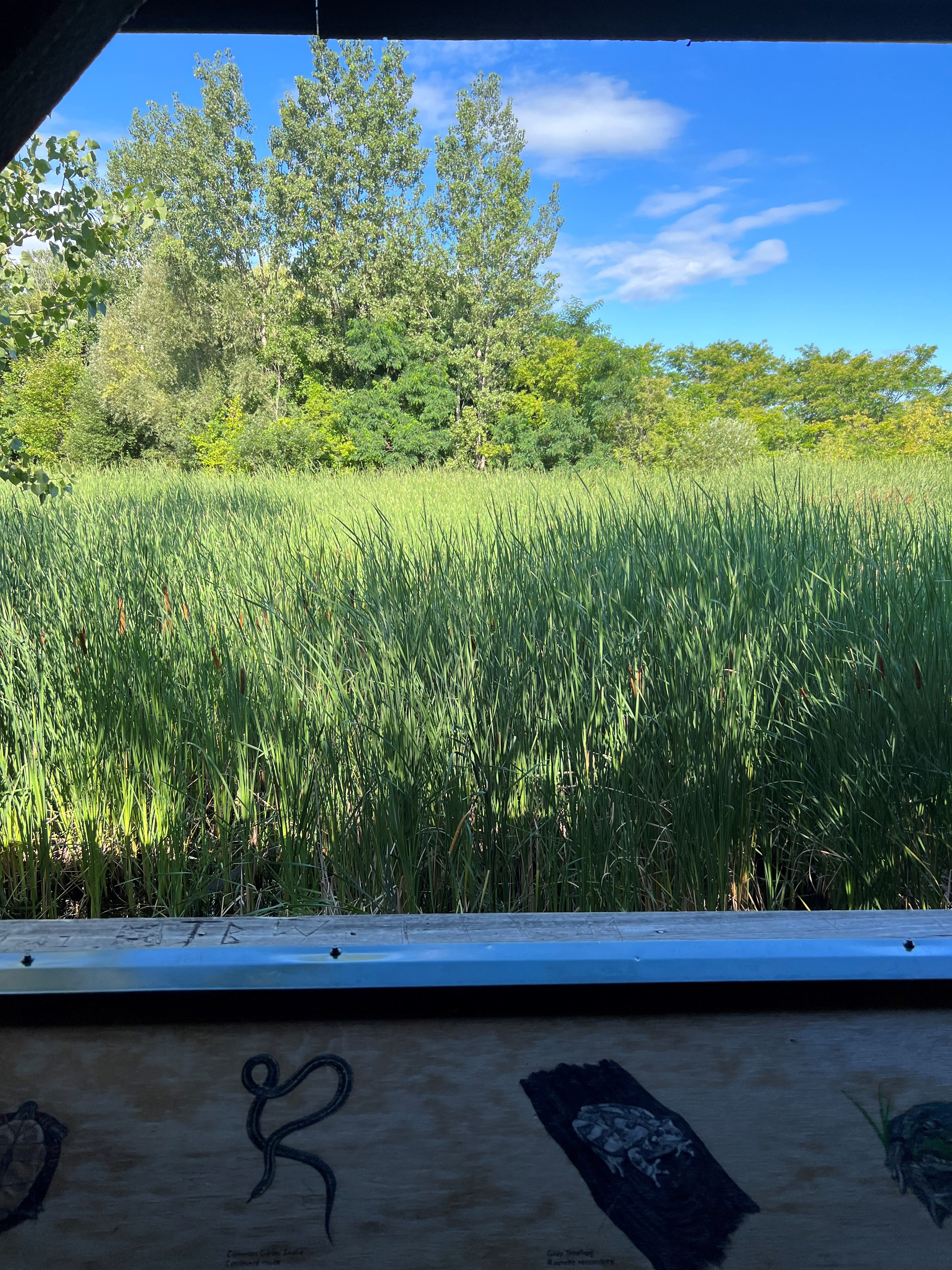
Sustainability of the Urban Macoun Marsh and Environmental Restoration – SUMMER by Jennifer Lamoureux, Biologist
Wetlands by the very nature of the name are areas that are typically wet during various parts of the year and usually have plants that are tolerant of wet conditions. They provide many benefits to the watershed including the storage of water to help with flood control and erosion, filtering water to improve water quality, providing important fish and wildlife habitat, and are locations with generally higher biodiversity.
Due to the increase in the number of drought years that we are experiencing, the Macoun Marsh often suffers from extremely low water levels, which negatively impacts summer and winter habitat conditions for the species that rely on it. Along the shoreline zone there have also been increases in the number of non-native invasive plants including common buckthorn and garlic mustard. Over time, both these plants will negatively impact the diversity of the riparian area surrounding the Macoun Marsh, which will impact the terrestrial and aquatic functions of the wetland.
These observations have led to Beechwood forming a local with ASL Contracting to improve the wetland by implementing common wetland restoration techniques. Local partners have come together to enhance the marsh and to improve habitat conditions for fish and wildlife populations.
The work will involve opening up pockets of the cattail beds through excavation, installing wood structure from trees that have already fallen from previous storms and have been stockpiled nearby, and revegetating any disturbed areas along the shoreline with native plants and seed mixtures.
The habitat enhancement project aims to do the following:
- Create deepened pool habitat within the wetland.
- Increase biodiversity of aquatic/terrestrial plants, fish and wildlife.
- Provide winter and summer refuge areas for fish and wildlife, including rearing areas for waterfowl and areas for shorebirds to feed.
- Install logs for turtles to bask and for fish to use as cover.
- Remove invasive shrubs along the shoreline and replant with native shrubs.
- Select native shrubs that provide food sources for birds.
- Improve biodiversity to enhance the educational opportunities for local school and community groups.
- Enhance the passive recreational opportunities for activities like bird watching and nature photography.
Once the work is completed it doesn’t take long for the wetland to adjust, for the plants to take hold and for wildlife to thrive.
How can you get involved?
There will be opportunities for the community to get involved with the project during and after construction.
Opportunities for a community planting day to remove invasive species along the shoreline and replant with native shrubs will be available. Stay tuned for more details and opportunities to get involved with that aspect of the restoration plan.
Another important part of any wetland restoration project is to monitor the change after construction. To help us understand how the wetland restoration project is working, we will be asking the community to share their observations with us. This can be done in a variety of ways including application programs like INaturalist or simply by sending them in. This will help us understand how the wetland is adapting and what future work might provide additional benefits.

